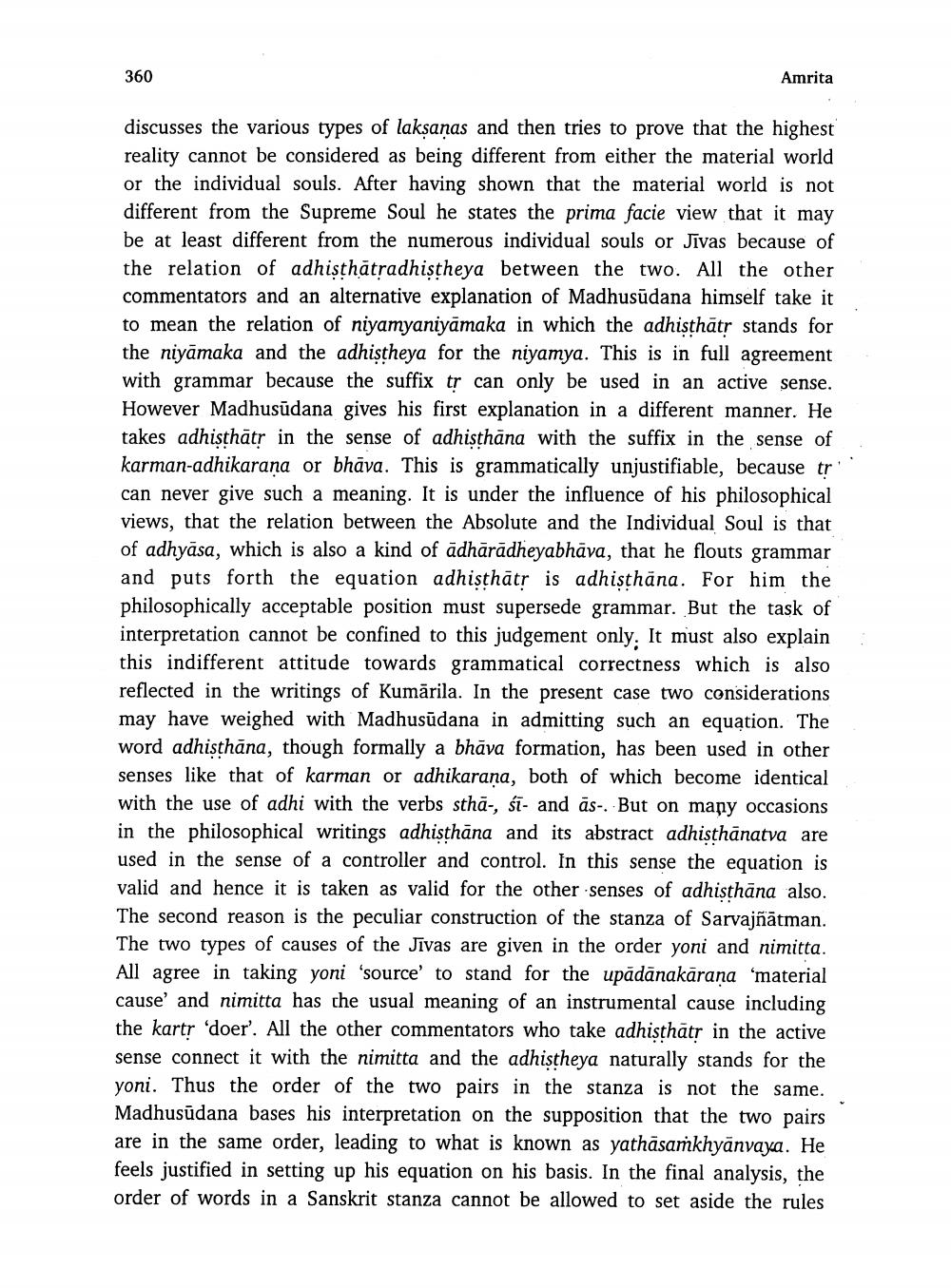________________
360
Amrita
discusses the various types of lakṣaṇas and then tries to prove that the highest reality cannot be considered as being different from either the material world or the individual souls. After having shown that the material world is not different from the Supreme Soul he states the prima facie view that it may be at least different from the numerous individual souls or Jivas because of the relation of adhiṣṭhātṛadhiṣṭheya between the two. All the other commentators and an alternative explanation of Madhusudana himself take it to mean the relation of niyamyaniyämaka in which the adhisthätṛ stands for the niyamaka and the adhistheya for the niyamya. This is in full agreement with grammar because the suffix tr can only be used in an active sense. However Madhusudana gives his first explanation in a different manner. He takes adhisthātṛ in the sense of adhiṣṭhāna with the suffix in the sense of karman-adhikarana or bhava. This is grammatically unjustifiable, because tr can never give such a meaning. It is under the influence of his philosophical views, that the relation between the Absolute and the Individual Soul is that of adhyasa, which is also a kind of ädhäradheyabhäva, that he flouts grammar and puts forth the equation adhiṣṭhātṛ is adhisthäna. For him the philosophically acceptable position must supersede grammar. But the task of interpretation cannot be confined to this judgement only, It must also explain this indifferent attitude towards grammatical correctness which is also reflected in the writings of Kumārila. In the present case two considerations may have weighed with Madhusudana in admitting such an equation. The word adhiṣṭhāna, though formally a bhava formation, has been used in other senses like that of karman or adhikaraṇa, both of which become identical with the use of adhi with the verbs sthä-, si- and äs-. But on many occasions. in the philosophical writings adhiṣṭhāna and its abstract adhisthänatva are used in the sense of a controller and control. In this sense the equation is valid and hence it is taken as valid for the other senses of adhisthāna also. The second reason is the peculiar construction of the stanza of Sarvajñätman. The two types of causes of the Jivas are given in the order yoni and nimitta. All agree in taking yoni 'source' to stand for the upädänakāraṇa 'material cause' and nimitta has the usual meaning of an instrumental cause including the karty 'doer'. All the other commentators who take adhisthätṛ in the active sense connect it with the nimitta and the adhistheya naturally stands for the yoni. Thus the order of the two pairs in the stanza is not the same. Madhusudana bases his interpretation on the supposition that the two pairs are in the same order, leading to what is known as yathāsamkhyānvaya. He feels justified in setting up his equation on his basis. In the final analysis, the order of words in a Sanskrit stanza cannot be allowed to set aside the rules




